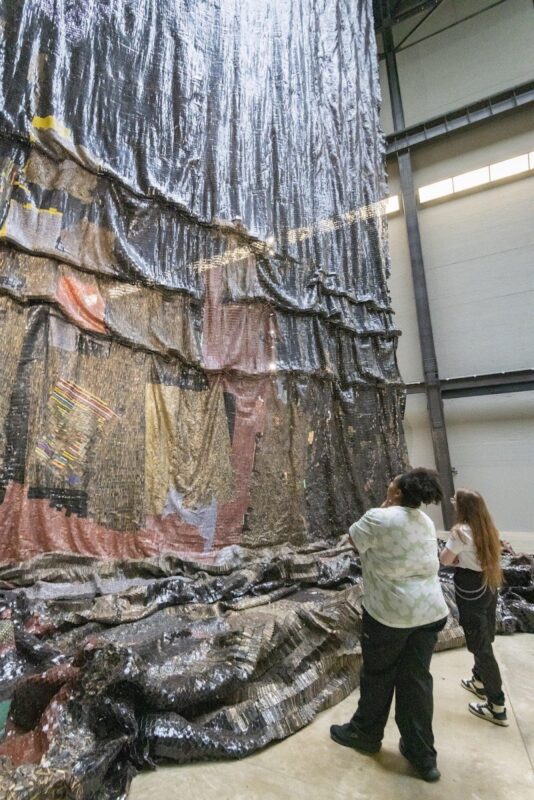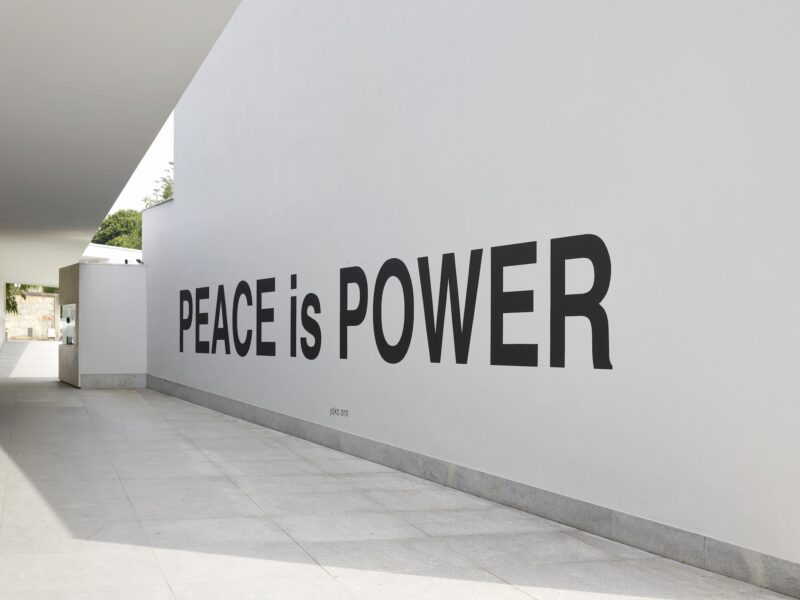
Just opened at Somerset House We Are History is a new group exhibition offering a different perspective on humanity’s impact on the planet by tracing the complex interrelations between today’s climate crisis and legacies of colonialism.
The exhibition, which has opened to coincide with 1-54 Contemporary African Art Fair, spotlights the works of 11 artists with personal connections to countries in the Caribbean, South America and Africa, bringing to the fore the perspectives of their communities, not as an afterthought in climate debates, but as the source of resonant ideas and imagery related to social and environmental justice.
Curated by writer Ekow Eshun, and showcasing photography, prints, textile, installation and video, We Are History presents works that are moving, lyrical and thought-provoking, caphttps://youtu.be/2RqpLsEdnsAturing nature as a place of both beauty and fragility. Featuring artists Alberta Whittle, Allora & Calzadilla, Carolina Caycedo, Louis Henderson, Malala Andrialavidrazana, Mazenett Quiroga, Otobong Nkanga, Zineb Sedira and a newly commissioned work by multidisciplinary artist Shiraz Bayjoo, the exhibition interrogates the environmental issues facing the southern hemisphere by looking to the past and drawing important insight from the cultural practices and knowledge systems of indigenous peoples.
Collectively, the exhibition’s contributors are looking to expand the common narrative around climate change, a subject that is often linked to the beginning of the Industrial Revolution in the West. We Are History invites visitors to look further back in time, exploring significant periods of change such as the 18th-century colonial era, which saw plantation agriculture and the forced mass migration of people through slavery reshaping lives and landscapes on a global scale.
The artworks in We Are History are lyrical, moving and historically charged. They seek to address climate crisis, not directly or didactically, but with a poetry and nuance that expands the visual framework we bring to the subject. By preferencing perspectives from the global South, the exhibition also identifies environmental change as a racial process with deep roots in colonial history.
Ekow Eshun, Curator

The exhibition opens with work from Puerto-Rico based artist duo Jennifer Allora & Guillermo Calzadilla who catalogued sites in Puerto Rico where palm trees were used as natural markers by the U.S. military during their sixty-year occupation of the island, to identify locations where hazardous waste had been disposed. These sites, which are now paradoxically managed as Conservation Zones, are photographed by Allora & Calzadilla and disrupted using screen-printing.
Born to Colombian parents, artist Carolina Caycedo looks towards Colombia, Mexico and Brazil, to document the effects of damming on surrounding communities and landscapes. Presenting archival images, maps, poems, satellite photos and researched texts, displayed in a meandering accordion fold style artist book, her Serpent River book tracks the power dynamics associated with the corporatisation and decimation of water resources, and the activism of displaced communities.
In a new work specially commissioned for the exhibition, Shiraz Bayjoo presents Dan Sa Karo Kann (in those cane fields), a work that deconstructs the material and visual languages of coloniality imposed on native populations in the Indian Ocean. Bringing together ceramic, sculpture and textile works, the installation considers the plantation as a site of extraction and seeks to restructure and re-dignify the archive of people and places affected by legacies of empire.
Franco-Algerian photographer and video artist Zineb Sedira presents two large-scale photographs, The Lovers (2009) and Sugar Routes I (2013) which documents the movement of sugar for mass consumption across the Atlantic from the Southern hemisphere reflecting on the history of human migration across oceans. Nigerian-born visual and performance artist Otobong Nkanga similarly reflects on the harvesting and transportation of the kola nut and its cultural significance in Nigeria, which flourished on the global market as an early ingredient in Coca-Cola but fell out of fashion due to its requirements of care.
Drawing further upon the themes of the movement, and the relationship between societal traditions and globalisation, Madagascar-born artist Malala Andrialavidrazana presents works from her ongoing series Figures. Her series of large-scale prints use identifiable signs, symbols and clichés of the recent past, from outdated atlases to banknotes and world stamps, questioning how inaccurate information, biased cultural norms and imagined hierarchies can be used to cement power and domination.
Artist duo Mazenett Quiroga explore the relationships between living organisms and how the ‘resources’ in their ecosystems, both mineral and biological, are appropriated and expanded across cultures, becoming integral to globalised economies and our daily lives. Drawing upon a fascination with the jaguar, present as a physical and spiritual animal in most native American cultures, the artists explored the animal’s habitat in the Colombian Amazon and the Lacandon jungle of Mexico, where mineral mining is threatening the environment.
Two video works complete the exhibition. Alberta Whittle’s from the forest to the concrete (to the forest) (2019) was developed during the aftermath of Hurricane Dorian in 2019, one of the most powerful cyclones to strike the Caribbean in modern times. Whittle interweaves performance with footage of the cyclone’s destruction, calling upon viewers to reflect upon their relative comfort living in the UK and elsewhere, in contrast to the destructive impact of the weather and societal inequalities affecting other parts of the world. Filmmaker Louis Henderson uses film to critique European colonial history in The Sea is History, presenting an adaption of Derek Walcott’s poem of the same name, overlayed with imagery filmed on Lago Enriquillo in the Dominican Republic, a hyper-salinated lake that continually floods the border with Haiti due to the drastic rise in sea temperatures affecting the global ocean.
WE ARE HISTORY 16th October 2021 – 6th February 2022









